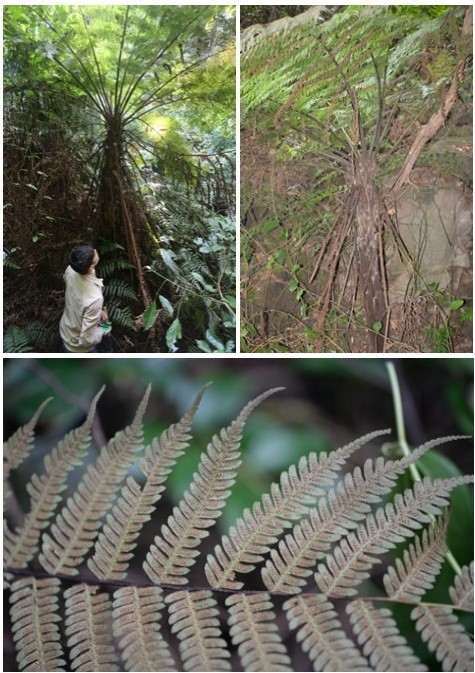

Getting here
-
In a new study, Dr. LU Xiankai and his colleagues from the South China Botanical Garden (SCBG) of the Chinese Academy of Sciences (CAS) found that tropical forests can capture carbon dioxide (CO2) into soils and thus reduce emitted CO2. But how exactly do tropical forest soils capture atmospheric...
-
Global changes have profoundly effects on plant water use efficiency (WUE) and N availability (NA) in forests. Large-scale geographic gradients provide an opportunity to determine how global changes affect plant WUE and NA.
Recently, researchers led by Dr. KUANG Yuanwen from Southern China Bo...
-
Anthropogenic nitrogen (N) emission and subsequent N deposition have greatly affected the carbon (C) cycles of terrestrial ecosystems.
Researchers led by Dr. KUANG Yuanwen from South China Botanical Garden of Chinese Academy of Science found that canopy N addition significantly reduced soil o...
-
Mycoheterotrophs are a group of plants having lost chlorophylls, parasitic on mycorrhizal fungi. They are the ‘aliens’ of the plant world because of their rarity and weird looks. Non-green full mycoheterotrophs live their life completely depending on fungi, usually maintain more specialized fun...
-
Recently, during a plant survey near Maofeng Mountain in Guangzhou by researchers from South China Botanical Garden of Chinese Academy of Sciences and specialized staff of Longyandong Forest Farm of Guangdong Province, Alsophila spinulosa, a national second-class protective plant, was found in a ...

Tel:0086-20-38314070 Email:yuyan@scbg.ac.cn
Address:No.723,Xingke Road,Tianhe District,Guangzhou,China Postcode:510650
Copyright©South China Botanical Garden All Right Reserved, Powered by scbg.ac.cn


 Researchers reveal host preference and specialization toward fungal assemblages in mycoheterotrophs[2021-03-16]Mycoheterotrophs are a group of plants having lost chlorophylls, parasitic on mycorrhizal fungi. They are the ‘aliens’ of the plant world because of their rarity and weird looks. Non-green full mycoheterotrophs live their life completely depending on fungi, usually maintain more specialized fun...
Researchers reveal host preference and specialization toward fungal assemblages in mycoheterotrophs[2021-03-16]Mycoheterotrophs are a group of plants having lost chlorophylls, parasitic on mycorrhizal fungi. They are the ‘aliens’ of the plant world because of their rarity and weird looks. Non-green full mycoheterotrophs live their life completely depending on fungi, usually maintain more specialized fun... Living fossil and endangered tree fern Alsophila spinulosa was newly discovered from Guangzhou[2021-03-02]Recently, during a plant survey near Maofeng Mountain in Guangzhou by researchers from South China Botanical Garden of Chinese Academy of Sciences and specialized staff of Longyandong Forest Farm of Guangdong Province, Alsophila spinulosa, a national second-class protective plant, was found in a ...
Living fossil and endangered tree fern Alsophila spinulosa was newly discovered from Guangzhou[2021-03-02]Recently, during a plant survey near Maofeng Mountain in Guangzhou by researchers from South China Botanical Garden of Chinese Academy of Sciences and specialized staff of Longyandong Forest Farm of Guangdong Province, Alsophila spinulosa, a national second-class protective plant, was found in a ...
